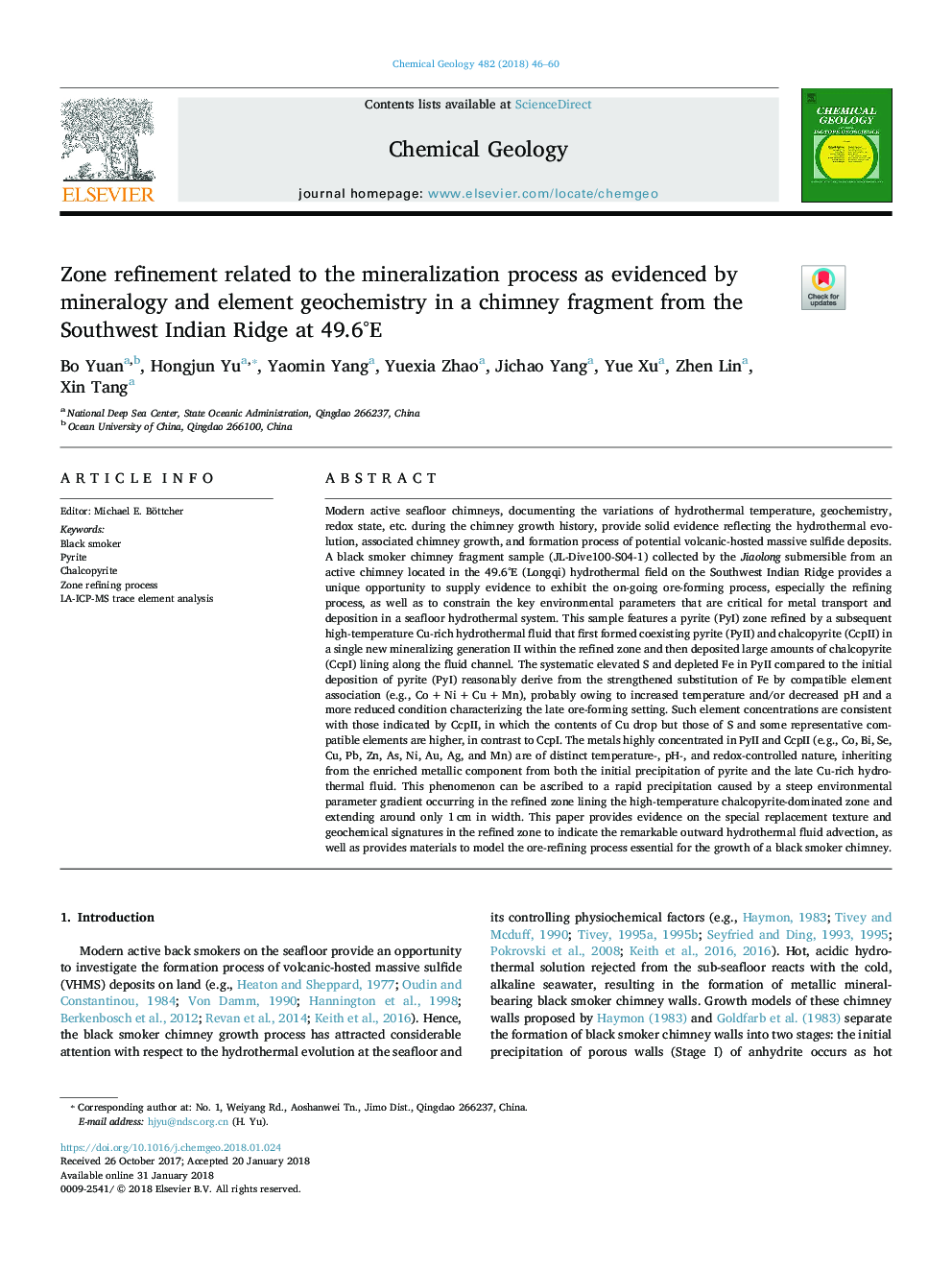| Article ID | Journal | Published Year | Pages | File Type |
|---|---|---|---|---|
| 8910315 | Chemical Geology | 2018 | 15 Pages |
Abstract
Modern active seafloor chimneys, documenting the variations of hydrothermal temperature, geochemistry, redox state, etc. during the chimney growth history, provide solid evidence reflecting the hydrothermal evolution, associated chimney growth, and formation process of potential volcanic-hosted massive sulfide deposits. A black smoker chimney fragment sample (JL-Dive100-S04-1) collected by the Jiaolong submersible from an active chimney located in the 49.6°E (Longqi) hydrothermal field on the Southwest Indian Ridge provides a unique opportunity to supply evidence to exhibit the on-going ore-forming process, especially the refining process, as well as to constrain the key environmental parameters that are critical for metal transport and deposition in a seafloor hydrothermal system. This sample features a pyrite (PyI) zone refined by a subsequent high-temperature Cu-rich hydrothermal fluid that first formed coexisting pyrite (PyII) and chalcopyrite (CcpII) in a single new mineralizing generation II within the refined zone and then deposited large amounts of chalcopyrite (CcpI) lining along the fluid channel. The systematic elevated S and depleted Fe in PyII compared to the initial deposition of pyrite (PyI) reasonably derive from the strengthened substitution of Fe by compatible element association (e.g., Coâ¯+â¯Niâ¯+â¯Cuâ¯+â¯Mn), probably owing to increased temperature and/or decreased pH and a more reduced condition characterizing the late ore-forming setting. Such element concentrations are consistent with those indicated by CcpII, in which the contents of Cu drop but those of S and some representative compatible elements are higher, in contrast to CcpI. The metals highly concentrated in PyII and CcpII (e.g., Co, Bi, Se, Cu, Pb, Zn, As, Ni, Au, Ag, and Mn) are of distinct temperature-, pH-, and redox-controlled nature, inheriting from the enriched metallic component from both the initial precipitation of pyrite and the late Cu-rich hydrothermal fluid. This phenomenon can be ascribed to a rapid precipitation caused by a steep environmental parameter gradient occurring in the refined zone lining the high-temperature chalcopyrite-dominated zone and extending around only 1â¯cm in width. This paper provides evidence on the special replacement texture and geochemical signatures in the refined zone to indicate the remarkable outward hydrothermal fluid advection, as well as provides materials to model the ore-refining process essential for the growth of a black smoker chimney.
Keywords
Related Topics
Physical Sciences and Engineering
Earth and Planetary Sciences
Geochemistry and Petrology
Authors
Bo Yuan, Hongjun Yu, Yaomin Yang, Yuexia Zhao, Jichao Yang, Yue Xu, Zhen Lin, Xin Tang,
